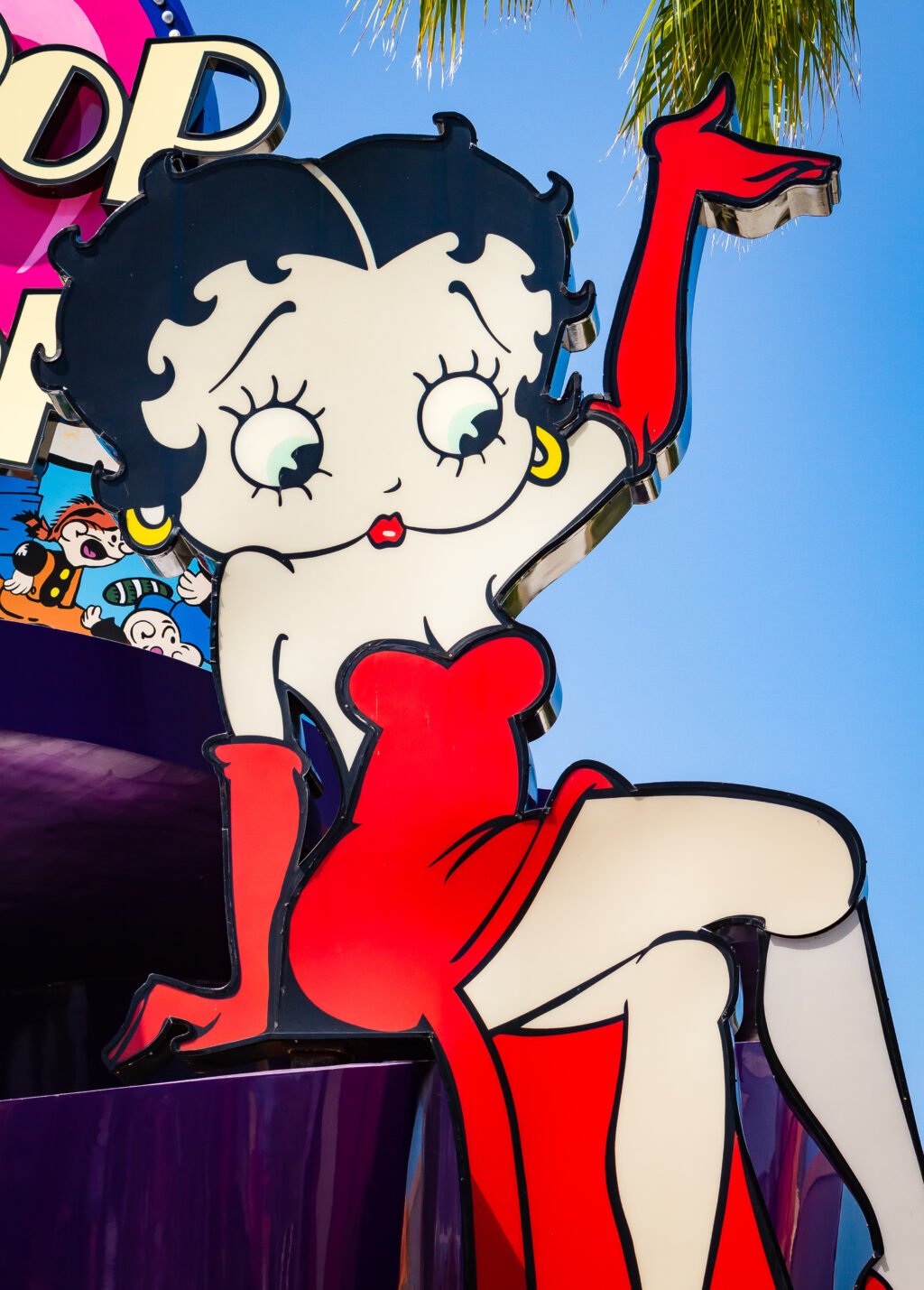YSL TRIAL IS BETTY BOOP

SHUTTERSTOCK - 1308057184 - Orlando, Florida / USA - April 21, 2019: Universal Studios Orlando Park is getting ready to celebrate the 86th anniversary of the famous film of 1933 "Betty Boop's Birthday Party".
BY THE LEGAL EAGLE
When I was a kid, we were entertained by a comic strip that appeared in newspapers and on TV as a children’s entertainment program featuring a character named Betty Boop.
The Betty Boop character was created by Max Fleischer, with significant contributions from animator Grim Natwick. Betty Boop first appeared in the cartoon “Dizzy Dishes” in 1930. A large collection of Fleischer’s cartoons are still posted on YouTube.
Most kids found Betty Boop very funny, with her jet-black curls tightly pinned against her head. Her outfits were unusually sexual with bust lines, skirts that flipped up behind her backside and stocking tops showing on her thighs – all in all, quite sexy. We did not realize the cartoon character was depicting a Black female saloon entertainer.
Kids were clueless as to the character’s ethnicity or that it was even sexual because television was Black and White and there was nothing in children’s entertainment to compare it to. With all its social flaws, the cartoon character was accepted by everyone with very little objection or criticism.
As the decades passed and society became more sophisticated and modernized, it was revealed that Betty Boop was in fact fashioned after an entertainer of the 1930s era, “Baby Esther.” Baby Esther’s unique singing style, which included the phrase “Boop-Oop-a-Doop,” was a significant influence on the creation of Betty Boop.
Max Fleischer, the creator of Betty Boop, did not explicitly credit Baby Esther as the inspiration. Instead, he “mentioned” that the character was a caricature of singer Helen Kane, who had adopted Baby Esther’s style. This led to a lawsuit where it was revealed that Helen Kane had indeed copied and stolen Baby Esther’s act.
During that era, it was common for white performers to take a Black entertainer’s entire repertoire, copy and perform it, and essentially steal the Black performer’s entire show, rendering the Black act useless since it was already being done by a “white” person.
The theft of the characterization was so profitable that white artists were encouraged to sue the Black person they stole the act from, to ensure the Black artist would not try to reclaim the work that had been stolen from them in the first place. This was a true example of systemic racism.
On plantations, the plantation owner would appoint a Black man to maintain discipline and supervise the cultivation of crops on the property. Those men were also allowed to beat the slaves with a leather strap with metal nails attached to it. They were referred to as “drivers.” The drivers often worked under the supervision of a white overseer.
In modern times, the YSL RICO case in Fulton County, Georgia, is very much a case of systemic racism. The community seems to accept the unjust incarceration of young Black men because this time around, having Black professionals jail them doesn’t seem quite as harsh.
But whether you’re jailed by a Black person or a white person, if the arrest is unjustified, it’s still wrong. It’s not an accident that Fani Willis doesn’t want the men charged. As long as they’re arrested for trespassing or loitering, they’re sitting in a holding cell waiting for the YSL prosecutors to need a “patsy” to fulfill a void in the YSL trial.
That type of racism was so severe that federal law finally had to step in and stop it because white professionals would find every way they could to steal work and value from Black professional designers and artists of any kind. The music industry is an excellent example.
Nowhere else in the United States can a legal entity such as a Sheriff’s Department, a Police Department, District Attorneys, and other law enforcement professionals go through the streets of a community, arresting and corralling Black men and bringing them to a local jail system merely for hanging out. Whether they participated in a crime or not, many of these young men are confessing to crimes they had no part in just to get out of jail.
Over time, the jailer and prosecutor positions were filled with DEI hires. As the years passed and the people in authority were also Black, the community didn’t fight the racial injustice as hard as they fought the same injustice in the past.
The YSL trial is one of the few modern-day, blatant, highly successful slavery operations being run in the United States. The prison industry is highly lucrative.
Due to the legal inability for whites to arbitrarily take Black men’s civil rights from them as was done in the 1800s, a Black female DEI District Attorney used what she learned from Kamala Harris to incarcerate thousands of young Black men in Georgia.

It’s no secret that Nathan Wade and Fani Willis visited Kamala Harris at the White House. The visitor log proves it. Kamala often taunted, “with just the swipe of my pen.” It is shocking that Black people do not realize the serious threat she is making against Black people. She’s not Black – she’s from India.
By changing “The Drivers” on the Fulton County, Georgia landscape from white men to black men and women, the move was such a smooth and silky operation that the Black community didn’t see it coming and didn’t recognize it for what it was because the perpetrator would go to church, hide behind the fundamentalist pulpits, and use the race card.



